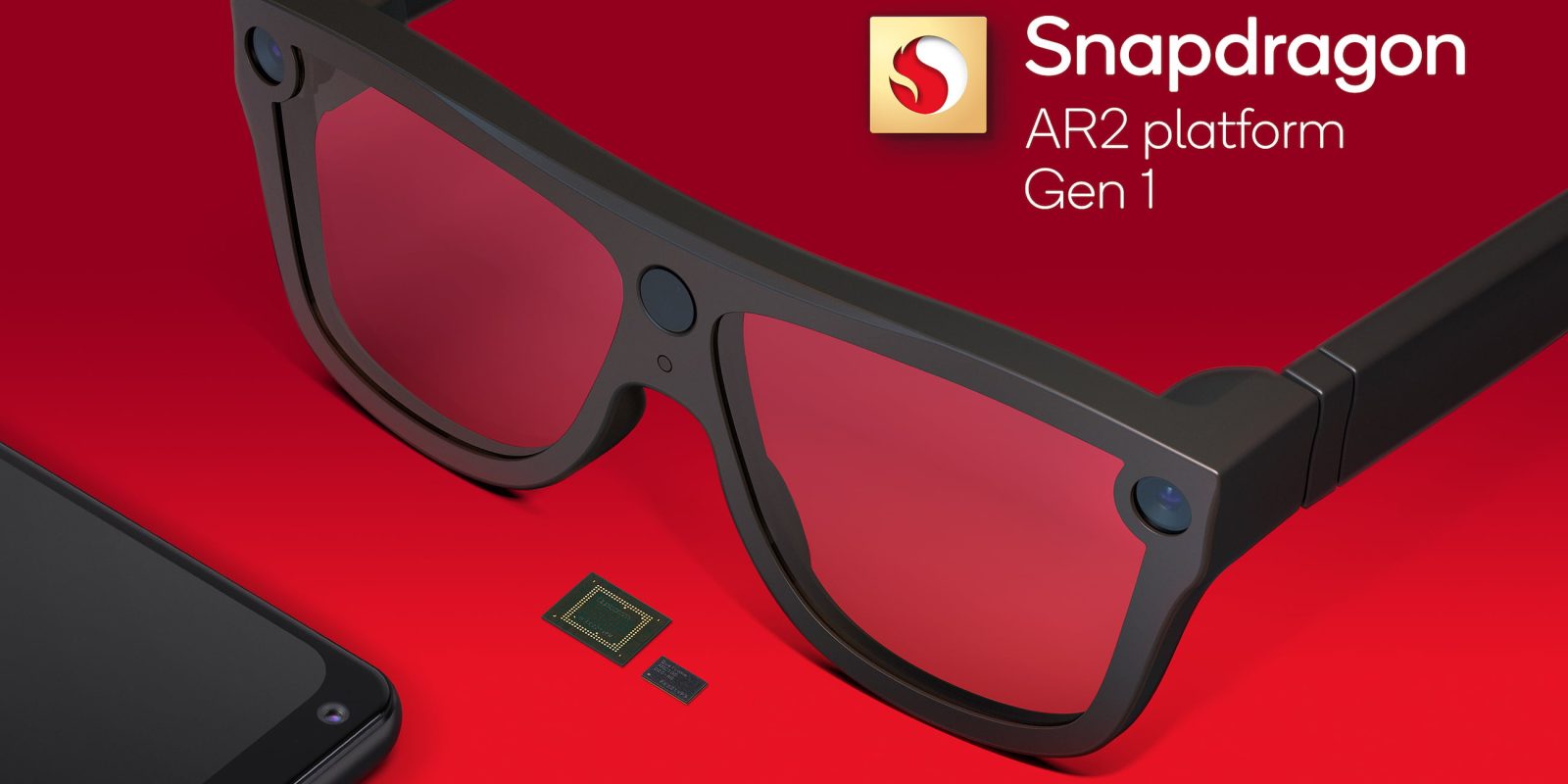
Before today, Qualcomm focused on mixed reality chipsets (XR1 and XR2) that could be used for both augmented and virtual reality headsets. The company is now making its first purpose-built AR chip with the Snapdragon AR2 Gen 1.
Given the form factor’s physical constraints, Qualcomm is using a “multi-chip distributed processing architecture” so that not all the components are placed on one large board. Rather, the AR processor can be inside one stem, the AR coprocessor in the bridge, and connectivity on the other stem. Compared to the XR2, the AR2 uses 50% less power.
This 4nm AR processor supports up to nine concurrent cameras for user and environmental understanding with an “Engine for Visual Analytics” tasked with object detection. Other dedicated hardware improves motion tracking and localization, while hand tracking or 6DoF work with reduced latency thanks to an AI accelerator. Besides perception, this chip is used to drive display output with a “Reprojection Engine” making sure visual overlays remain anchored as you move.
The AR coprocessor combines camera and sensor data, while eye tracking allows for foveated rendering to more efficiently focus “workloads only where the user is looking.” There’s also support for iris authentication, with the chip containing its own CPU, memory, and hardware for camera/sensor aggregation, computer vision, and security.
Like on the Snapdragon 8 Gen 2, the Qualcomm FastConnect 7800 brings Wi-Fi 7 support with under 2 millisecond latency between the AR glasses and a paired “host” device. More complex data processing is offloaded to the connected smartphone (or PC), while latency-sensitive perception data is processed directly on the glasses.
In terms of Snapdragon AR2 Gen 1 adoption, Lenovo, LG, Niantic, Nreal, OPPO, Pico, QONOQ, Rokid, Sharp, TCL, Tencent, Vuzix, and Xiaomi are in “various stages of development.”
Qualcomm also announced S5 Gen 2 and S3 Gen 2 Sound Platforms/chips that support spatial audio with dynamic head tracking, lossless audio quality, and 48ms latency.
Note: Qualcomm paid for travel and accommodations for this launch event, but had no input on editorial content.
FTC: We use income earning auto affiliate links. More.





Comments